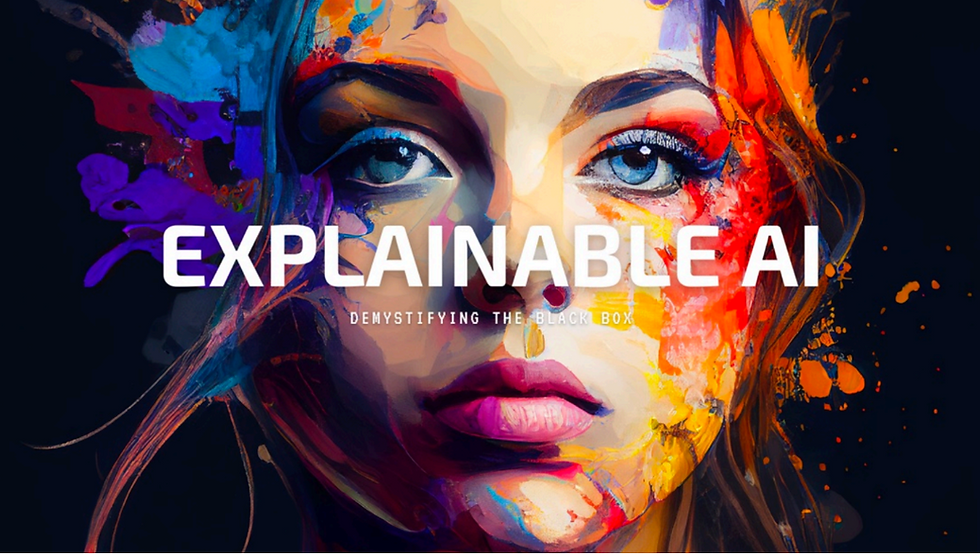Unveiling the Power of Explainable AI: Bridging the Gap Between Humans and Machines
- Anja Cappelle
- Oct 11, 2023
- 2 min read
In the ever-evolving landscape of artificial intelligence (AI), one critical aspect often overlooked is transparency. While AI has become an integral part of our lives and work, it operates as something of a black box for most users. This lack of transparency and understanding of AI systems has given rise to challenges and misunderstandings that need to be addressed. Enter Explainable AI (XAI), a concept that aims to shed light on the inner workings of AI, making it more accessible and comprehensible to all.
At the heart of the issue lies the fact that many AI systems are akin to a black box, concealing their decision-making processes. This opaqueness poses hurdles for both end-users and organizations. To illustrate, consider the experience of EEVE, a robotics company utilizing computer vision and AI for garden navigation. Customers often found it challenging to decipher their robot's behavior, leading to questions such as: "Why did my robot stop mowing the lawn when it encountered a group of flowers?" or "Why can't my robot dock properly?" The answers to these seemingly random actions were, in fact, logical, but understanding them required technical expertise.
To bridge the gap between AI systems and end-users, XAI involves the development of tools and user interfaces that provide clarity to users. By making AI's decision-making processes visible, users can gain insights into how the system interprets various elements. For instance, at EEVE, users can access an AI visualization feature on their smartphones, enabling them to see how the robot perceives the world. This approach fosters informed interactions between humans and machines.
Additionally, the advent of publicly available language models (LLMs) represents a significant advancement. These models enable the translation of an AI system's technical output into human-understandable language, allowing for meaningful conversations in a chat mode. Companies like Solvice, specializing in automating complex planning problems, already provide users with explanations for intricate decisions in planning and routing. By integrating LLMs into their interface, they transition from standard machine messages to user-friendly conversations with the system.
Even prominent platforms such as Bing have taken steps in this direction, revealing the factors considered when generating search results. This transparency provides users with insights into the origins of the answers they receive.
By unraveling the mystery of the AI black box, users gain confidence, leading to greater acceptance and positive outcomes. The potential of Explainable AI (XAI) is vast and can make AI more accessible, transparent, and reliable. As evidenced by the simple chat interface of ChatGPT, XAI has the potential to bridge the gap between humans and machines by making AI's decision-making processes visible, speaking the language of users, leveraging natural language interfaces, and using AI to explain reasoning. It's time to take AI out of the black box and into the light of understanding, enhancing its impact on our lives and work.
Bert Van Wassenhove is the author of this article. Its concepts and content is also available as keynote.





Comments